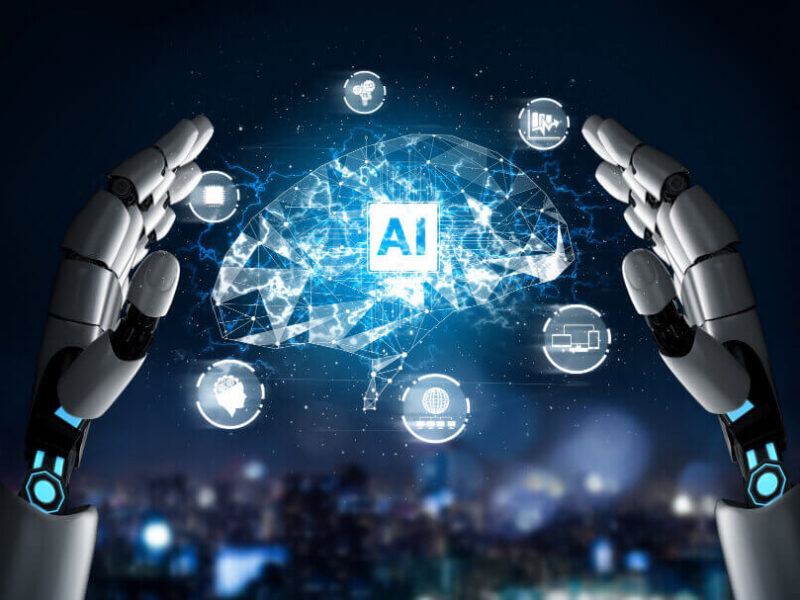Artificial Intelligence (AI) is all around us, infiltrating many aspects of our lives without our knowledge. Artificial intelligence Malaysia has had a significant influence on the way we live today, from banking to manufacturing sectors and even basic features like autocorrect functions and chatbots that we encounter on a regular basis.
More and more devices will have the ability to grasp, contextualize, and recognize pictures, acquire and develop knowledge through deep learning, and teach themselves how to comprehend speech and understand us when we communicate with or via AI in time.
AI is expected to have a transformative effect on both developed and developing nations, according to industry experts and governments. Accenture’s research into the impact of AI in 12 Western countries found that AI has the potential to raise annual economic growth by 2035 by 200 percent. PwC’s research also revealed that global GDP could be up to 14% higher in 2030 due to the adoption of AI.
However, there is a darker side to this. There are fears that it would lead to technology displacing human workers and leading to greater unemployment rates, as well as concerns that AI could be used by states or non-state actors for political or military purposes.
The recent Web Summit featured a flood of AI enthusiasm from the tech evangelists, who were no exception to the rule.
Here are five ways AI may be used that were highlighted at one of the world’s largest technological gatherings, which took place in Lisbon from November 1-4 after last year’s event was canceled due to the epidemic.
Healthcare
When Iker Casillas heard about a firm that uses artificial intelligence to identify abnormal heart rhythms, he jumped at the chance to invest. Casillas had a heart attack in 2019 and was forced to retire from professional football.
Idoven, a Madrid-based firm that specializes in data analysis from home heart-monitoring devices, uses this information to evaluate cardiac health and, importantly, detect impending issues.
“We are the first firm in the world to be able to do it,” boasted its president Manuel Marina-Breysse.
AI is also becoming more popular among mental health startups. Woebot, a chatbot that people can use to relieve their worries, adapts its replies based on an AI-informed analysis of the person’s emotional state..
“If someone is in distress or not feeling well, Woebot will tell them to work on it or just get it off their chest,” said Alison Darcy, the program’s creator.
Some people may be hesitant to share their feelings with a chatbot, but the Silicon Valley firm claims that individuals would rather confide in a machine than avoid the “baggage and social constructs” associated with human interactions – especially fear that the other person will judge you.
Cutting waste
AI is not a free win for the environment. According to University of Massachusetts researchers, training a single algorithm system can use up to five times as much carbon as operating a car over its lifetime.
AI is also being used to improve a wide number of industrial processes, from cement manufacturing to data center cooling. It might also be utilized to minimize the amount of garbage that ends up in landfills.
Greyparrot, a Scottish company, uses artificial intelligence to identify different kinds of waste as it moves down a conveyor belt, picking out recyclables better than conventional machines.
Safer roads
Could artificial intelligence prevent vehicle accidents? Provizio is a firm based in Ireland that is developing technology that uses machine learning to analyse data from automobile sensors.
Its inventor, Barry Lunn, envisions that this would enable emergency braking systems to respond 10 times faster in the future.
The Google self-driving car, which is one of Waymo’s current vehicles, was able to drive itself in Phoenix from 2017. The vehicle also has sophisticated sensors that constantly monitor its surroundings and report any anomalies directly to the cloud for analysis. This technology can be used for a variety of applications such as autonomous highway driving and passenger transport, among others.
Writing codes
The day of AI refusing all need for human assistance and developing its own computer code is rapidly approaching. OpenAI, a research lab in Portugal, is collaborating on Copilot, a software development platform GitHub project.
The tool can autocomplete sections of code, anticipating the intentions of the human software engineer. However, according to researchers at New York University, computers still need people: in fact, bugs remain in the code approximately 80% of the time.
Deepfakes
The ability to modify someone’s face, mouth, and voice in order to make it appear to be that of another person has long been a concern. Deepfakes are incredibly realistic likenesses of living people that can be made to act as the creator wishes. In recent years, deepfake technology, in which stunningly real faces of real individuals may be superimposed on to actors’ bodies, has become the source of both entertaining videos and serious concerns.
After a number of celebrities, including Tom Cruise, were found to have been duped by deepfakes earlier this year, the question of whether the technology might be used for fraud or even political influence has once again arisen.
An American firm founded by Ukrainians, Reface, is using deepfake AI to produce more amusing applications, allowing the user to substitute Justin Bieber’s head or the Mona Lisa’s for their own.
Not everyone would be interested in this, of course. However, co-founder Ivan Altsybieiev sees a future where individuals might create entire remakes of their favorite television programs, in which they star — a “future where all content can be personalized.”
This article is posted on CoffeeChat.


